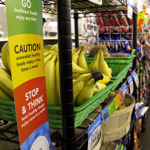Build It, Teach It, Change It
 “Building new supermarkets in areas that lack them won’t positively change people’s health.” That’s how the nightly news saw things after Health Affairs released a study comparing two Philadelphia neighborhoods. One got a new store selling fresh produce. The other did not. Researchers found no statistically significant improvements in body-mass index (BMI) or fruit and vegetable intake six months later.
“Building new supermarkets in areas that lack them won’t positively change people’s health.” That’s how the nightly news saw things after Health Affairs released a study comparing two Philadelphia neighborhoods. One got a new store selling fresh produce. The other did not. Researchers found no statistically significant improvements in body-mass index (BMI) or fruit and vegetable intake six months later.
Media sent the message that building new healthier food markets is not a good investment, but that’s a simplistic conclusion for a more nuanced challenge. Residents clearly cannot change their food buying behaviors until they have a choice of what to buy. If nearly 100 percent of the food options in a neighborhood consist of fast food, liquor and convenience outlets, then getting healthy foods on the table is a tall order. In other words, the strategy embraced by the Healthy Food Financing Initiative is still on the correct track.
On the other hand, the switch to healthy foods is just as clearly not a case of “build it, and they will come.” Frankly, it never has been – which is why affluent neighborhoods with grocery outlets struggle with high BMI’s and low fruit and vegetable intake too.
No, the correct recipe for changing eating habits has to be more complete. Step one: build it. Step two: encourage people to incorporate more and more healthy foods into their diets – and make them fun and tasty. Step three: the changes to BMI and health will come.
The conclusions from Philadelphia are the same ones our partners in Promotoras networks, community gardening, urban farming and valley community centers learned years ago. They’re the same ones food manufacturers have been practicing for decades. Just putting something on the shelves won’t get people to eat it. But teaching them to try it, prepare it and enjoy it will.